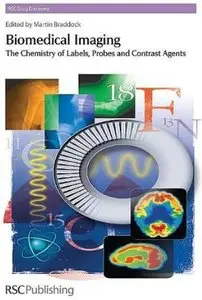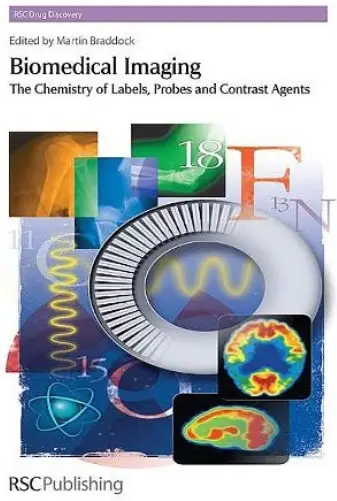Biomedical Imaging: The Chemistry of Labels, Probes and Contrast Agents by Martin Braddock, David Thurston, Pier Lucio Anelli and Robert Hanson
English | 2011-11-30 | ISBN: 1849730148 | PDF | 552 pages | 24,6 MB
English | 2011-11-30 | ISBN: 1849730148 | PDF | 552 pages | 24,6 MB
The concept of medical imaging is one of the cornerstones of modern medicine. Although its origins can be found in 19th Century photography, the field only properly emerged in 1895 following W. C. Röntgen's discovery of X-rays.
Since then, insights from across physics and chemistry have devised many new modalities, such as magnetic resonance imaging (MRI), optical imaging (including fluorescence), X-ray imaging (including X-ray computed tomography, CT), gamma imaging (including single photon emission computed tomography, SPECT), positron emission tomography (PET) and ultrasound techniques. Biomedical Imaging: The Chemistry of Labels, Probes and Contrast Agents begins with a comprehensive introduction to endogenous and exogenous contrast.
The book is then divided into four sections. Section one presents a review of some of the more important advances in recent years such as the development of radiotracers and radiopharmaceuticals as biomedical imaging tools and imaging agents for selected brain targets that are of both clinical relevance and pharmacological interest. Section two focuses on the design and synthesis of contrast agents, MRI and X-ray modalities. Section three discusses optical imaging techniques and the value of fluorescence optical imaging in pharmacological and drug development research. There are also chapters on fluorescence lifetime imaging applied to microviscosity mapping and fluorescence modification studies in cells and the design and use of contrast agents for ultrasound imaging. The final section focuses on physical techniques and application, with a review of recent advances in brain imaging that provide opportunities to develop biomarkers for diseases of the central nervous system (CNS) and current progress and future prospects of using MRI to assist in the drug discovery and drug development process.The final chapter brings the book to a close peering into the future of MRI contrast agents. This book will be essential reading for medicinal and physical scientists working in both industry and academia in the fields of chemistry, physics, radiology, biochemistry and pharmaceutical sciences.



